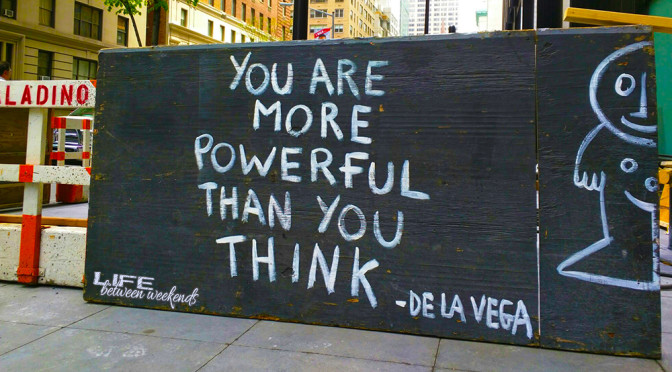Author: Nate Davison
-
All Rise, Halloween is in Session with Aaron Judge
Aaron Judge is arguably the biggest name in baseball right now, and here’s a great costume idea for Halloween that will get everyone to rise to their feet. Judge became the eighth player in Yankees history with at least 100 runs, 100 RBIs and 100 walks in a season, and the second rookie in major…
Written by

-
How to Host a Street View Scavenger Hunt
A long, long time ago (READ: 14 years) in a land far, far away (READ: the glorious suburbs of Tampa, FL), Candace introduced me to the wonderful world of team photo scavenger hunts. Here’s how it would work: Create a list of places, people, actions and things that everyone will need to find (ex. Find…
Written by

-
A Simple Formula To Hit Your Goals (Without Burning Out)
Congratulations. It’s hard to believe, but we’re already our fourth month into the new year, which means it’s a great time to reflect on how we’re pacing towards our New Year’s resolutions. If you’re like me, chances are your resolutions could be broken down into two categories: to-do-list resolutions and big-hairy-audacious resolutions. Their are a…
Written by

-
IT Is About to Get Real with This Pennywise-Inspired Costume
In 1990, Tim Curry starred as Pennywise the Dancing Clown in a mini-series adaptation of Stephen King’s novel It. And thanks to this film, Millennials grew up somewhat-to-completely horrified of Clowns. Now, 27 years later Pennywise (AKA It) is back with the promise to terrify the next generation’s youth. It feeds on the fears of…
Written by

-
Carving out time for Friendsgiving
Next week, Americans all over the country will be celebrating Thanksgiving — that time of the year we can all put our differences aside, appreciate all the many things we’ve been blessed with, and eat all sorts of incredible coma-inducing food. This week, though, we here at LBW recommend throwing a Friendsgiving party first . If…
Written by

-
Keeping a Balanced Life with Google Keep
I’ve got a confession for you. Sometimes, when I am spending time with my wife or hanging out with friends, something happens to me. It’s subtle at first, like a quiet whisper, and I’ll try to ignore it. Then, like a symphony that crescendos to a fortissimo, it captures my attention firmly in its grasp. A…
Written by

-
Working for (More Than) the Weekend
Two numbers: 5 & 2. 5 > 2… Every time. In many ways, this simple equation became the genesis for why Candace and I created LBW. I’ll let you in on a little secret that you already know: there are way more weekday days than weekend days. Every week, Scout’s honor! And if this equation has anything…
Written by

-
If You’re Looking for a Sign, You’ve Probably Already Passed It By
I’ll admit it, I am a huge fan of a well-timed motivational quote. Sure, I might not post a ‘hang in there’ kitten on my wall (largely on account of my extreme allergies to cats and that the mere sight may cause a sneezing frenzy), but I am all about that perfect quote that will inspire…
Written by
